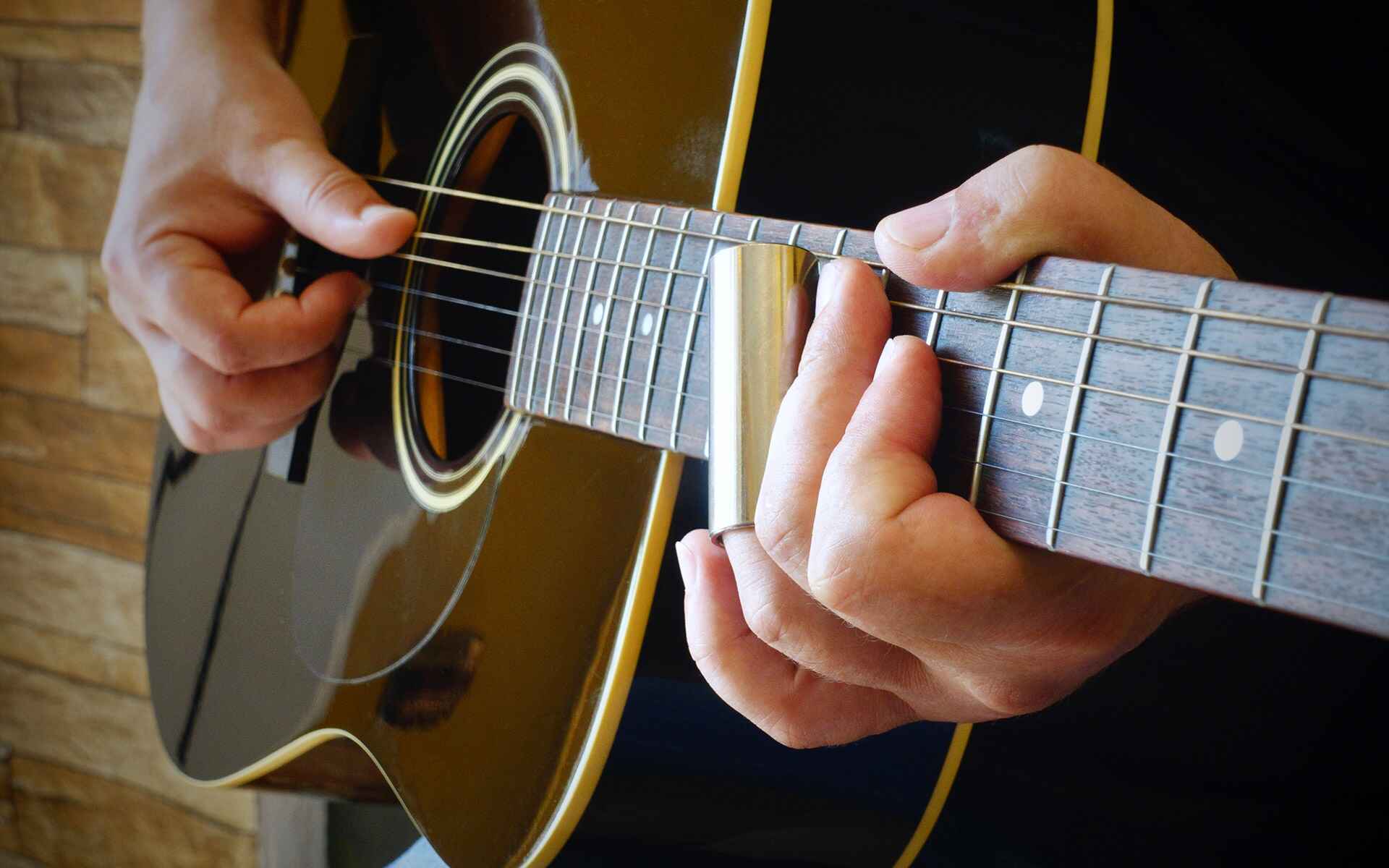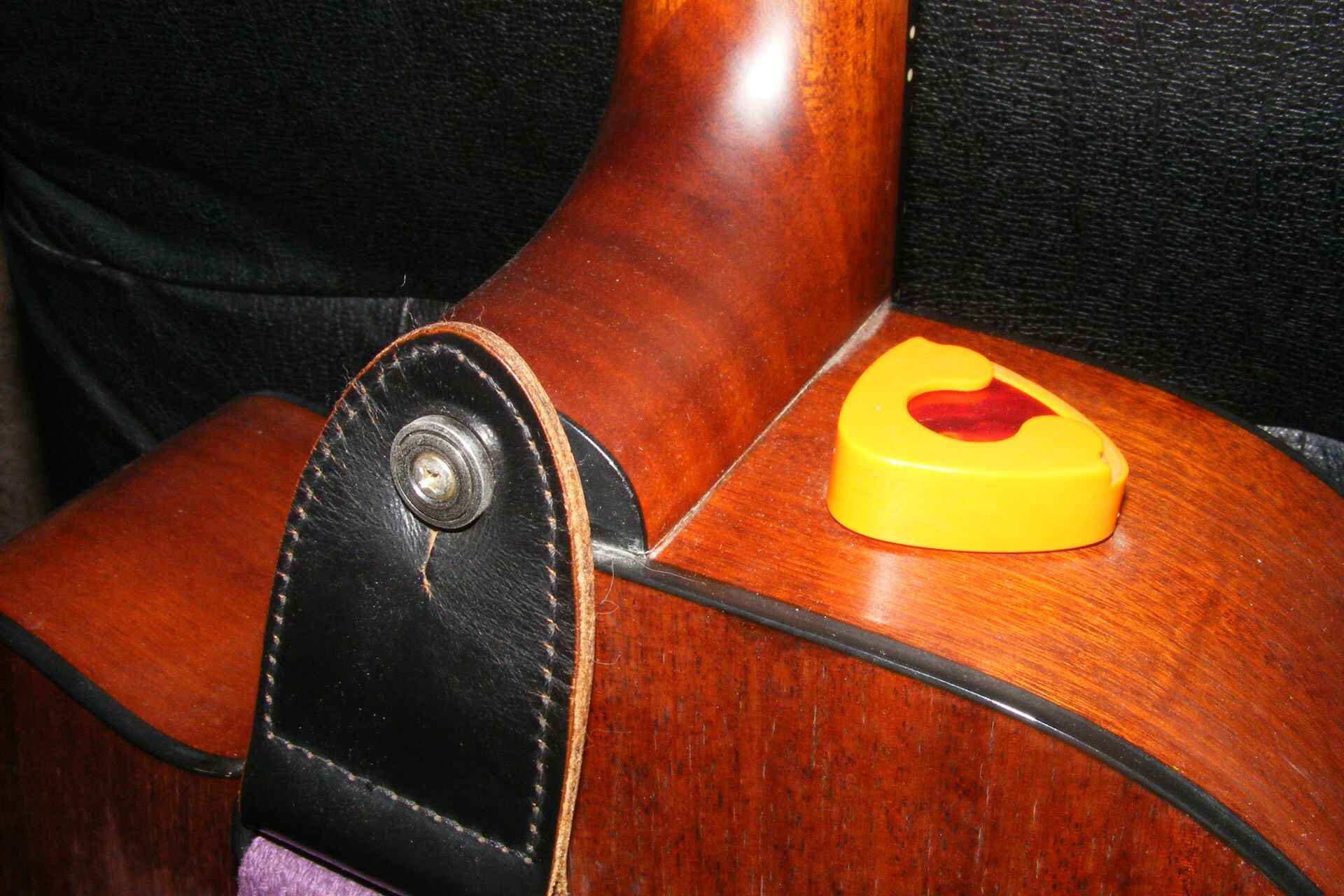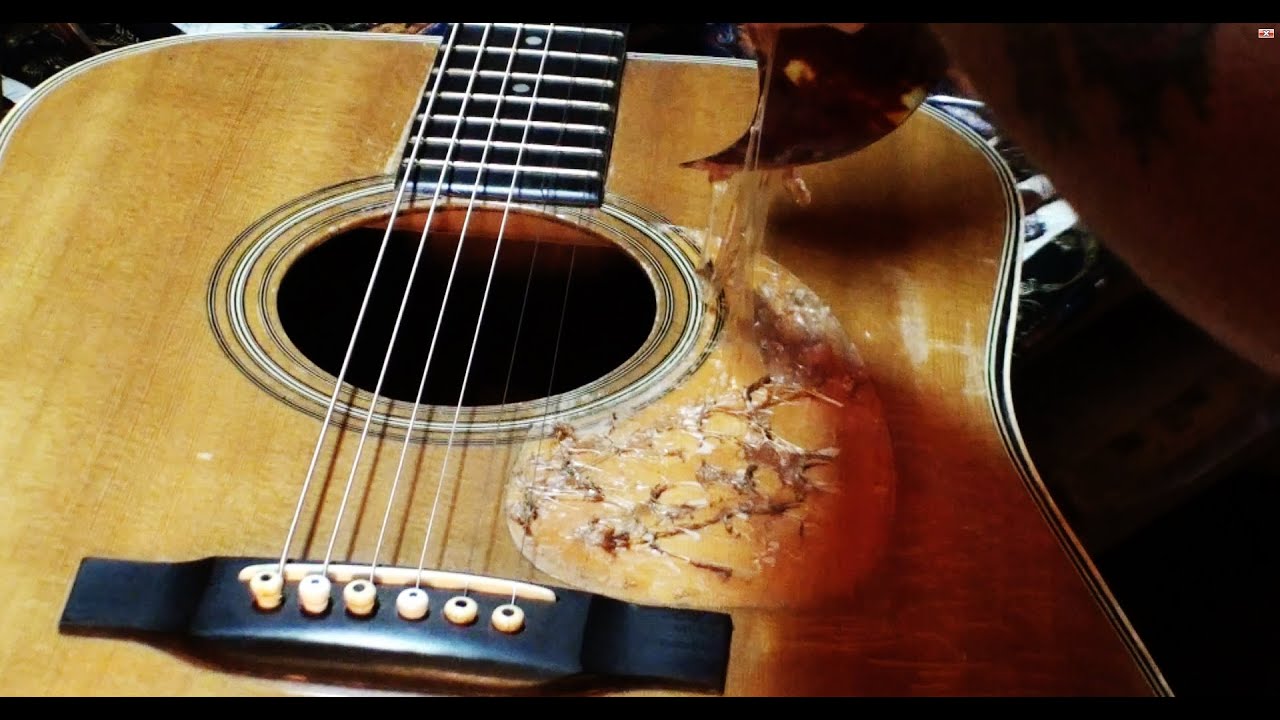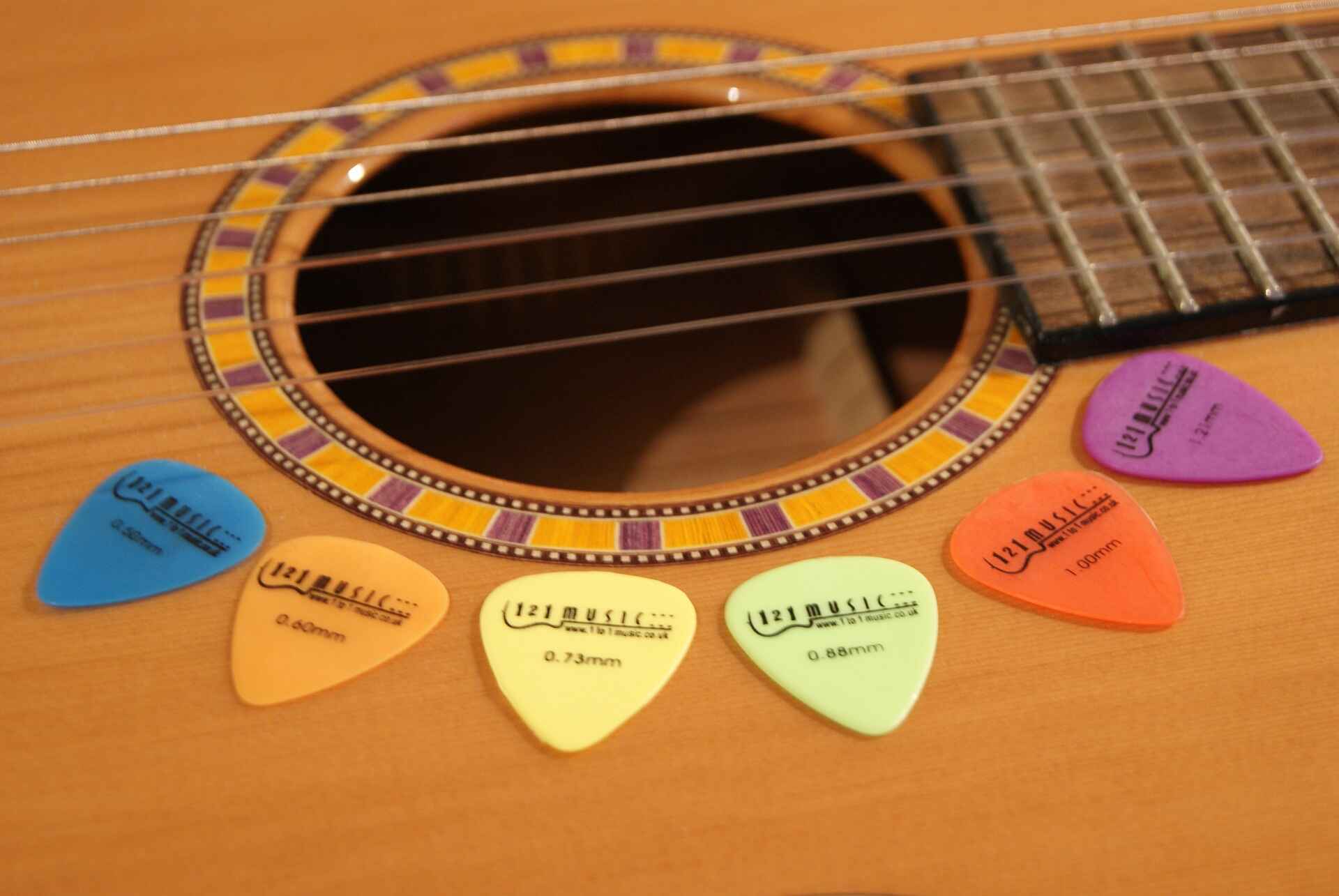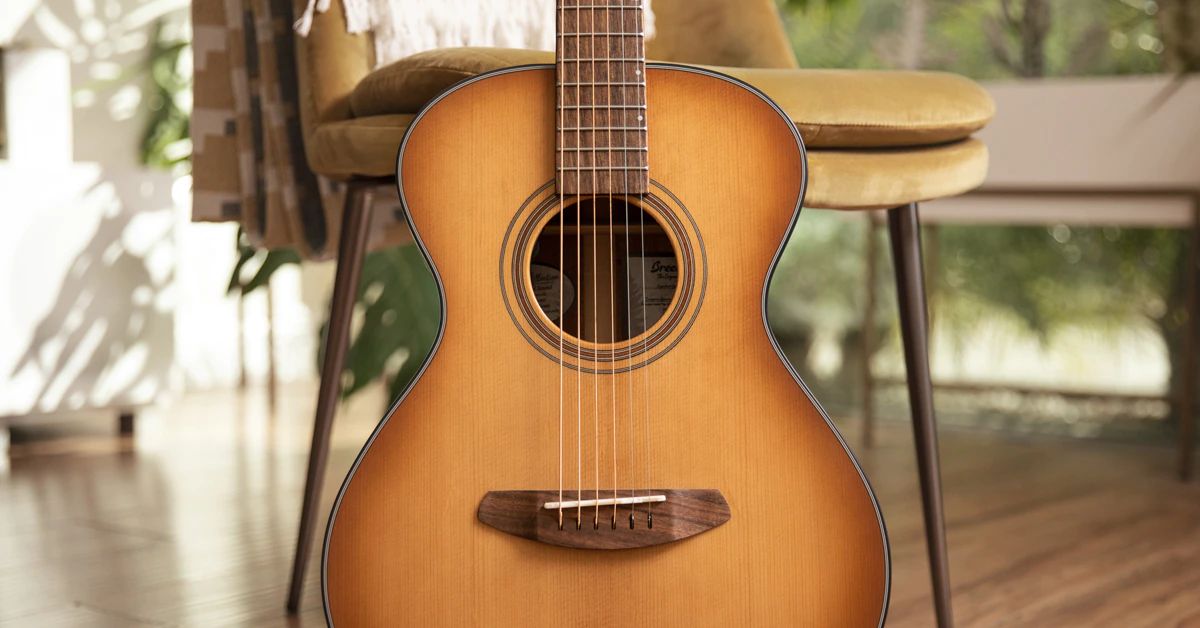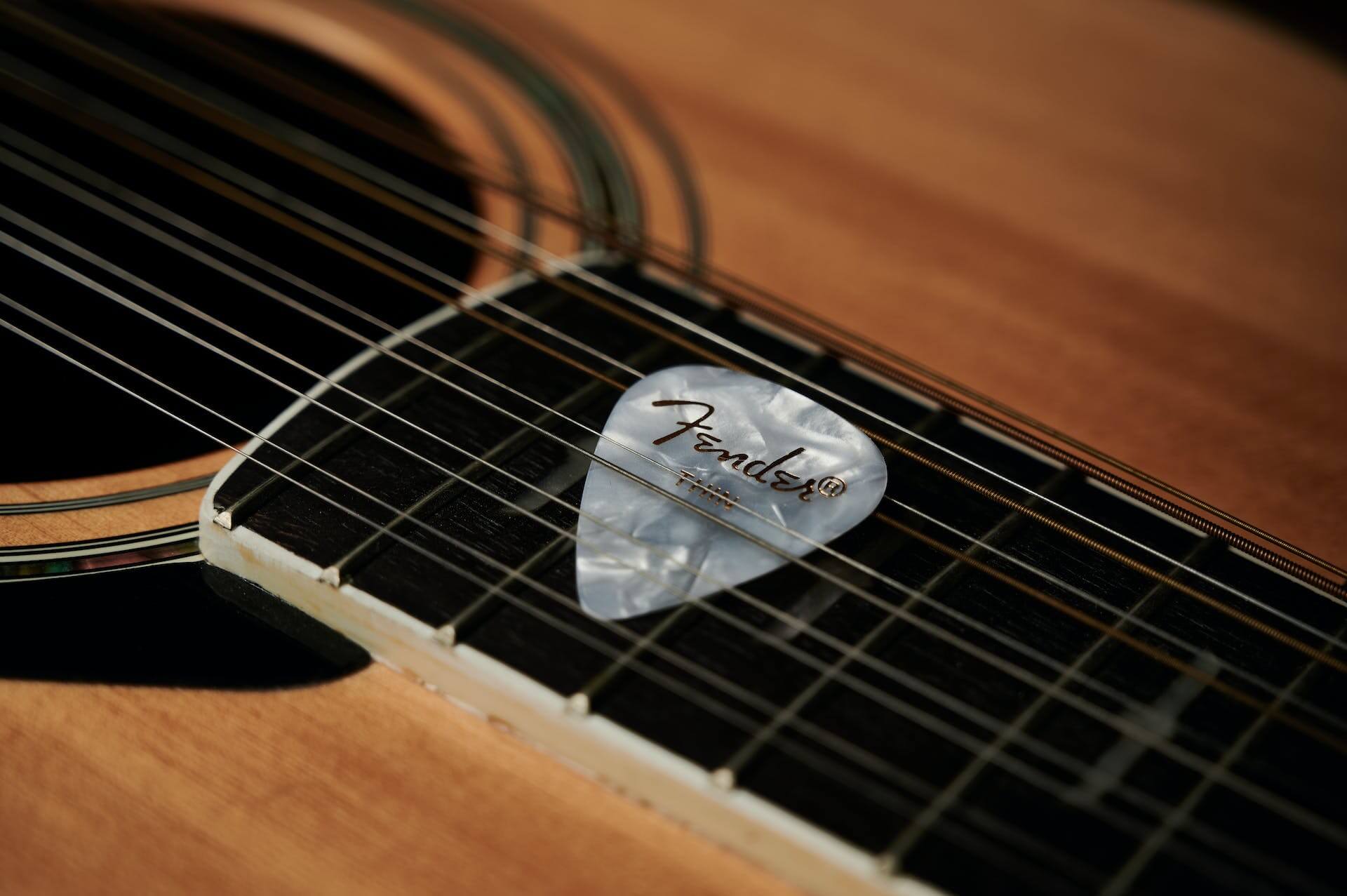Introduction
Playing the acoustic guitar is a beautiful and versatile art form, allowing you to create melodic tunes and captivate audiences with your music. While many guitarists rely on picks to strum and pluck the strings, playing without a pick can unlock a whole new world of possibilities. It allows for greater control, expression, and a unique sound that is unmatched.
In this article, we will explore the benefits of playing acoustic guitar without a pick and delve into the fingerpicking technique. We will also provide tips on selecting the right fingerpicking patterns, strengthening your fingers, and guide you through playing chords without a pick. Additionally, we will discuss how you can develop your own style and highlight common mistakes to avoid when playing without a pick.
Playing acoustic guitar without a pick offers several advantages. Firstly, it allows for greater precision and control over the sound produced. With your bare fingers, you can create softer, more nuanced tones, perfect for delicate passages and introspective melodies. Additionally, playing without a pick opens up new avenues for exploration in terms of dynamics, enabling you to effortlessly transition between soft and powerful notes, adding depth and emotion to your playing.
Furthermore, fingerpicking is a technique that brings a unique element to your guitar playing. It involves using multiple fingers to pluck individual strings, creating intricate and harmonious patterns. This technique allows you to experiment with various rhythms, arpeggios, and melodic lines, giving your music a distinct flavor. Whether you’re playing folk, blues, or classical guitar, fingerpicking adds a level of complexity and richness to your performance that cannot be achieved with a pick alone.
Playing the guitar without a pick does require some practice and finger strength, but fear not. We will provide you with tips and exercises to help strengthen your fingers and improve your fingerpicking technique. With dedication and patience, you’ll soon be able to effortlessly glide through strings and create mesmerizing melodies with your fingertips.
So, whether you’re a seasoned guitarist looking to expand your skills or a beginner wanting to explore new techniques, learning to play acoustic guitar without a pick is a journey worth embarking on. Let’s dive into the world of fingerpicking and discover a whole new realm of sonic possibilities.
Benefits of Playing Acoustic Guitar Without a Pick
Playing acoustic guitar without a pick offers a wide range of benefits that can enhance your playing style and musical expression. Here are some of the key advantages:
- Greater Control and Precision: When you play without a pick, you have direct contact with the strings, allowing you to have more control over the attack, volume, and dynamics of each note. This enables you to add subtle nuances and expressiveness to your playing.
- Unique Tone and Sound: Playing with your bare fingers produces a different tone compared to using a pick. The natural warmth and richness of your fingertips interacting with the strings create a distinct sound that cannot be replicated with a pick alone. This adds depth and character to your playing.
- Improved Finger Dexterity: Fingerpicking requires the use of multiple fingers in coordination. Practicing fingerpicking without a pick helps improve your finger dexterity, making your fingers more agile and nimble. This increased dexterity translates to better overall guitar playing skills.
- Expanded Musical Possibilities: Fingerpicking allows for the creation of complex patterns, intricate melodies, and harmonies. This opens up a whole new world of creativity and musical possibilities. By playing without a pick, you can explore various genres, such as folk, blues, fingerstyle, and classical, and broaden your repertoire.
- Versatility and Adaptability: When you play without a pick, you can seamlessly switch between strumming and fingerpicking techniques within a single piece of music. This versatility allows you to adapt your playing style to the mood and feel of a song, adding dynamic range and versatility to your performances.
By embracing the art of playing acoustic guitar without a pick, you not only improve your technical skills but also develop a unique playing style. It encourages you to experiment with different fingerpicking patterns, rhythmic variations, and chord voicings, adding your personal touch to the music you create.
Whether you’re a beginner or an experienced guitarist, playing acoustic guitar without a pick can take your playing to new heights and unlock new sonic possibilities. It’s a rewarding journey worth embarking on, allowing you to create music that is truly your own.
Fingerpicking Technique
Fingerpicking is a technique used in acoustic guitar playing where you use your fingertips or fingernails to pluck the strings individually instead of using a pick. This technique allows you to create intricate patterns, melodies, and harmonies, and adds a unique flavor to your playing style. Here are the key elements of fingerpicking technique:
- Finger Position: Place your fingers on the strings above the soundhole of the guitar. Typically, the thumb is responsible for plucking the bass strings (E, A, and sometimes D), while the other fingers (index, middle, ring, and pinky) are used for plucking the higher strings (G, B, and high E).
- Thumb Technique: Your thumb is the anchor of your fingerpicking hand. It should move in a downward motion to pluck the bass strings and create a solid rhythmic foundation. To achieve a fuller and richer sound, use the fleshy part of the thumb to strike the strings.
- Fingerpicking Patterns: There are various fingerpicking patterns you can learn and incorporate into your playing. One of the most common fingerpicking patterns is the Travis picking pattern, where your thumb alternates between the bass notes while the other fingers strike the higher strings. Explore different patterns and practice them gradually to build muscle memory and achieve fluidity in your playing.
- Alternating Bass Lines: In fingerpicking, the bass notes are usually played in a steady alternating pattern. This creates a rhythmic drive while allowing the melody to flourish. Focus on synchronizing your thumb with the rest of your fingers to maintain a consistent and balanced sound.
- Accuracy and Precision: Fingerpicking requires precision and accuracy. Take your time to ensure that each note is clear and distinct. Practice slowly at first and gradually increase your speed as you become more comfortable with the technique.
- Volume Control: By adjusting the pressure and angle of your fingers, you can control the volume of each note. This allows you to create a dynamic range, emphasizing certain notes and creating a pleasing musical expression.
Remember, fingerpicking is a skill that takes time and practice to develop. Start with simple fingerpicking patterns and gradually increase the complexity as you progress. Don’t be discouraged if it feels challenging at first. With patience and dedication, you’ll soon be fingerpicking with ease and confidence.
Experiment with different fingerpicking techniques and patterns to find the style that resonates with you. Each guitarist has their unique approach to fingerpicking, so embrace your individuality and let your fingers guide you to create beautiful melodies and harmonies.
Choosing the Right Fingerpicking Pattern
When it comes to fingerpicking, choosing the right fingerpicking pattern is crucial. The pattern you select sets the rhythm, groove, and overall feel of the music you’re playing. Here are some factors to consider when choosing a fingerpicking pattern:
- Song Style: Different fingerpicking patterns suit different musical styles. For example, the Travis picking pattern, with its alternating bass notes and melody, works well for folk and country music. On the other hand, the arpeggio pattern, where you pluck the strings of a chord in a specific order, is often used in classical and fingerstyle guitar compositions. Consider the genre and style of the song you’re playing and choose a fingerpicking pattern that complements it.
- Complexity Level: Fingerpicking patterns vary in complexity, from simple repetitive patterns to intricate, syncopated ones. Beginners may want to start with basic patterns and gradually progress to more challenging ones as they gain confidence and skill. Don’t be afraid to challenge yourself, but also be realistic about your current abilities.
- Song Structure: The structure of the song influences the choice of fingerpicking pattern. A verse or chorus may require a different pattern or variation to add variety and maintain the listener’s interest. Analyze the song’s structure and decide which patterns work best for different sections of the music.
- Technical Ability: Consider your technical ability when choosing a fingerpicking pattern. Some patterns may require finger stretching or quick finger movements. Start with patterns that match your current skill level and gradually introduce more challenging patterns as you improve your finger dexterity and coordination.
- Musicality: Ultimately, the right fingerpicking pattern should enhance the musicality of the song. It should complement the melody and chords, providing a rhythmic foundation that supports the overall feel of the music. Trust your musical instincts and choose patterns that resonate with the emotion and expression you want to convey.
One way to discover new fingerpicking patterns is to listen to and learn from experienced fingerstyle guitarists. Study their techniques and patterns, and adapt them to suit your own unique style. Additionally, there are numerous resources available, including online tutorials and instructional books, that can help you learn and master different fingerpicking patterns.
Remember, experimenting and exploring different fingerpicking patterns is part of the creative journey. Don’t be afraid to try new patterns, modify existing ones, or even create your own fingerpicking patterns. The more you experiment, the better you’ll understand which patterns work best for your playing style and musical expression.
By choosing the right fingerpicking pattern, you can elevate your guitar playing to new heights and unlock a world of possibilities and creativity.
Tips for Strengthening Your Fingers
Playing guitar without a pick requires finger strength and dexterity. Strengthening your fingers is essential to improve your fingerpicking technique and overall guitar playing. Here are some useful tips to help you strengthen your fingers:
- Finger Exercises: Perform regular finger exercises to build strength and flexibility. Simple exercises such as finger stretches, squeezing a stress ball, or using a hand grip strengthener can help strengthen your fingers and improve finger dexterity.
- Finger Independence: Work on exercises that specifically target finger independence. Practice playing scales, arpeggios, or simple melodic patterns using individual fingers. This helps develop the ability to control each finger independently, allowing for smoother fingerpicking and chord transitions.
- Thumb Exercises: Don’t forget to include exercises for your thumb as well. Strengthening your thumb will improve your ability to play bass notes and maintain a steady rhythm. Practice thumb exercises such as alternating bass lines or thumbpicking exercises to build strength and coordination.
- Gradual Progression: Gradually increase the difficulty and complexity of your finger exercises. Start with basic exercises and gradually introduce more challenging patterns and stretches as your fingers become stronger. Pushing your limits incrementally will help you progress without straining or injuring your fingers.
- Consistency is Key: Consistency is crucial when it comes to finger strength training. Dedicate regular practice sessions to finger exercises to see significant improvement over time. Even just 10 minutes of focused finger exercises each day can make a noticeable difference in building finger strength.
- Warm-up and Stretching: Before diving into finger exercises, it’s important to warm up your fingers and stretch them. Utilize simple warm-up exercises such as finger rolls, hand stretches, and thumb circles to increase blood flow and prevent injuries.
- Take Breaks: Overworking your fingers can lead to fatigue and strain. Take short breaks during practice sessions to allow your fingers to rest and recover. This will prevent overuse injuries and ensure healthier finger development in the long run.
- Patience and Persistence: Developing finger strength takes time and consistent effort. Be patient with the progress and don’t get discouraged. Stay persistent, and you’ll gradually notice improvements in your finger strength and flexibility.
Remember, building finger strength is an ongoing process. Make finger exercises a regular part of your practice routine and tailor them to your specific needs. With time and dedication, your fingers will become stronger, allowing you to tackle more complex fingerpicking patterns and effortlessly navigate the fretboard.
Keep in mind that it’s important to listen to your body and avoid pushing yourself too hard. If you experience any pain or discomfort, take a break and consult a professional if necessary. The goal is to build strength gradually and safely, ensuring a lifetime of enjoyable guitar playing.
Step-by-Step Guide to Playing Chords Without a Pick
Playing chords without a pick can add a touch of richness and intimacy to your guitar playing. Here is a step-by-step guide to help you play chords without a pick:
- Finger Placement: Start by placing your fingertips on the appropriate strings and frets to form the desired chord shape. Ensure that each finger is pressing down firmly on the strings to produce clean and clear notes.
- Thumb Position: Position your thumb behind the neck of the guitar, providing support and stability. The placement of your thumb will depend on the chord shape and comfort, but it generally rests towards the middle of the neck.
- Strumming with Fingers: Instead of using a pick to strum, use the fleshier part of your fingers (usually the fleshy pads of the fingertips) to gently brush across the strings. Practice strumming up and down with your fingers in a controlled and rhythmic motion.
- Mute Unwanted Strings: Pay attention to muting any unwanted strings. This can be done by lightly touching the unnecessary strings with the fingers that are not pressing down on the strings to form the chord. This prevents them from ringing out and interfering with the sound of the chord.
- Focus on Individual Strings: For more intricate playing, such as fingerpicking patterns within a chord, focus on plucking individual strings with the appropriate fingers. This requires coordination between the thumb and fingers, ensuring that each note is clear and distinct.
- Experiment with Strumming Patterns: Once you are comfortable with basic strumming, experiment with different strumming patterns using your fingers. Vary the rhythm, intensity, and picking pattern to create unique sounds and textures.
- Transition Smoothly: Work on smooth chord transitions without a pick. Practice moving between chords in a fluid and seamless manner, ensuring that each note within the chord rings out clearly and the overall transition sounds smooth.
- Practice with Various Chord Progressions: Apply your newfound technique to different chord progressions and songs. Start with simple progressions and gradually increase the difficulty as you build confidence and proficiency. Focus on maintaining consistent finger placement and strumming accuracy across different chords.
- Develop Muscle Memory: Repetition is key to develop muscle memory. Consistently practice playing chords without a pick to build muscle memory and improve your fingerpicking technique. Over time, your fingers will naturally know where to go without conscious effort.
- Listen and Adjust: Pay attention to the sound you’re producing. Listen for any muted or buzzing strings and adjust your finger placement and strumming technique accordingly. Continually refine and improve your technique by actively listening to your playing.
Remember, playing chords without a pick may require some adjustment and practice, especially if you are accustomed to using a pick. Stay patient, be persistent, and dedicate regular practice sessions to refine your technique. With time and effort, you’ll develop the skills to create beautiful chord progressions and melodies using just your fingers.
Enjoy the journey of playing chords without a pick and embrace the unique sound and expressiveness it brings to your guitar playing!
Developing Your Own Style Without a Pick
Playing guitar without a pick opens up a world of possibilities for developing your own unique playing style. Here are some tips to help you explore and develop your style without a pick:
- Experiment with Fingerpicking Patterns: Fingerpicking gives you the freedom to create your own patterns and explore different rhythms and melodies. Experiment with various fingerpicking patterns and modify existing ones to suit your personal taste. Let your fingers guide you and find patterns that resonate with your musical style.
- Combine Strumming and Fingerpicking: Blend strumming and fingerpicking techniques to create a style that is uniquely yours. Incorporate fingerpicking patterns within strummed chords or vice versa to add dimension and dynamics to your playing. This combination can create a rich and textured sound that sets your playing apart.
- Embrace Open Tunings: Open tunings can unlock new possibilities for your playing style. Experiment with alternate tunings such as open D, open G, or drop D, and explore the unique sounds and chord voicings they offer. Open tunings can inspire you to create new melodies and develop a signature sound.
- Use Dynamics and Articulation: Focus on dynamics and articulation to bring your playing to life. Vary the intensity, volume, and attack of your notes to create a sense of expression and emotion. Utilize techniques like hammer-ons, pull-offs, bends, and slides to add color and texture to your playing.
- Listen to Other Players: Listen to a variety of guitarists who play without a pick and draw inspiration from their styles. Discover fingerstyle, classical, and folk guitarists who resonate with you. Observe their techniques, phrasing, and musicality, and incorporate elements that inspire you into your own playing style.
- Record and Listen to Yourself: Record your playing and listen back to it with a critical ear. This allows you to evaluate and identify unique elements in your style that you can further develop and enhance. It also helps you to identify areas for improvement and refine your playing technique.
- Play with Feel and Emotion: Developing your own style isn’t just about technique; it’s also about playing with feeling and emotion. Connect with the music and express yourself through your playing. Develop your phrasing, dynamics, and tone, allowing your unique musical personality to shine through.
- Be Open to Inspiration: Stay open to new ideas and inspirations. Don’t limit yourself to a specific genre or style. Explore different musical genres, experiment with different rhythms, chord progressions, and melodic patterns. Let your musical influences expand your horizons and help you develop a style that is truly your own.
Remember, developing your own style is a journey that requires time, dedication, and self-expression. Embrace your individuality, explore different techniques and styles, and allow your creativity to guide you. With persistence and a commitment to finding your unique voice, you’ll develop a playing style that sets you apart as a guitarist.
Enjoy the process of discovering and developing your own style without a pick, and let your music become a true reflection of who you are as an artist.
Common Mistakes to Avoid When Playing Without a Pick
Playing guitar without a pick can be a rewarding and expressive experience. However, there are some common mistakes to be aware of and avoid to improve your technique and overall playing. Here are some key mistakes to watch out for:
- Excessive Tension: One common mistake is playing with excessive tension in your hand and fingers. This can lead to a strained playing experience and hinder your ability to play with precision and control. Focus on staying relaxed and maintaining a light touch on the strings.
- Inconsistent Volume: It’s important to maintain consistent volume and attack when playing without a pick. Be mindful of how you strike the strings with your fingers and aim for an even and balanced sound. Practice controlling your finger strength to achieve consistent volume across all strings.
- Ignoring Proper Finger Placements: Ensure that your fingers are placed correctly on the strings to produce clean and clear notes. Watch out for unintentionally muting adjacent strings or accidentally touching unwanted strings that can dampen the sound. Pay attention to your finger positions and make adjustments as needed.
- Overlooking Wrist and Arm Position: Your wrist and arm position play a significant role in your playing technique. Avoid bending your wrist excessively or tensing up your arm. Aim for a relaxed and natural posture to maintain fluidity and minimize strain on your wrist and arm muscles.
- Lack of Dynamics: Dynamics are crucial in music to convey emotion and musicality. Avoid playing with a monotonous and consistent volume throughout a piece. Experiment with varying dynamics, playing some sections louder and others softer to create contrast and expressiveness.
- Neglecting Rhythm and Timing: Playing without a pick requires good rhythmic control. Practice playing along with a metronome or rhythm track to develop a strong sense of timing. Be mindful of maintaining a steady and consistent rhythm, allowing all your finger movements to sync with the beat.
- Ignoring Hand and Finger Exercises: Neglecting hand and finger exercises can hinder your progress. Regularly practice finger strengthening exercises and stretches to improve dexterity and finger independence. These exercises will enhance your ability to maneuver the strings and execute complex fingerpicking patterns.
- Failure to Listen and Adjust: It’s essential to actively listen to your playing and make necessary adjustments. Pay attention to the clarity and tone of each note. If you notice any buzzing, unwanted string noise, or muted notes, make the necessary corrections in your finger positioning and technique.
By being aware of these common mistakes and actively working to avoid them, you can improve your fingerpicking technique and overall playing. Regular practice, experimentation, and a focus on proper technique will help you overcome these challenges, allowing you to fully explore the world of playing guitar without a pick.
Remember, patience and persistence are crucial. Embrace these challenges as opportunities for growth and improvement, and enjoy the process of refining your playing style without a pick.
Conclusion
Playing acoustic guitar without a pick offers a world of possibilities and allows you to develop a unique playing style that is truly your own. By exploring fingerpicking techniques, selecting the right fingerpicking patterns, strengthening your fingers, and avoiding common mistakes, you can unlock a whole new level of musical expression and creativity.
Through fingerpicking, you have the control to produce softer, more nuanced tones and create intricate melodies and harmonies. The ability to strum and pluck the strings with your fingers gives you greater precision, dynamics, and versatility in your playing. Fingerpicking opens up new genres and styles, allowing you to explore folk, blues, fingerstyle, and classical music.
As you develop your fingerpicking technique, don’t be afraid to experiment and embrace your musical inspirations. Blend strumming and fingerpicking, incorporate open tunings, and focus on articulation and dynamics to develop a distinct style that reflects your musical personality. Listen to other guitarists, record and evaluate your playing, and continually refine your technique to enhance your skills and musicality.
Remember, developing your own style and proficiency without a pick is a journey that requires dedication, patience, and a willingness to embrace creativity. Enjoy the process, be open to new ideas, and allow your individuality to shine through your playing.
So, grab your acoustic guitar, set aside your pick, and embark on the exciting adventure of playing fingerstyle. With practice and persistence, you’ll develop a unique playing style that captivates audiences and brings your musical vision to life.







